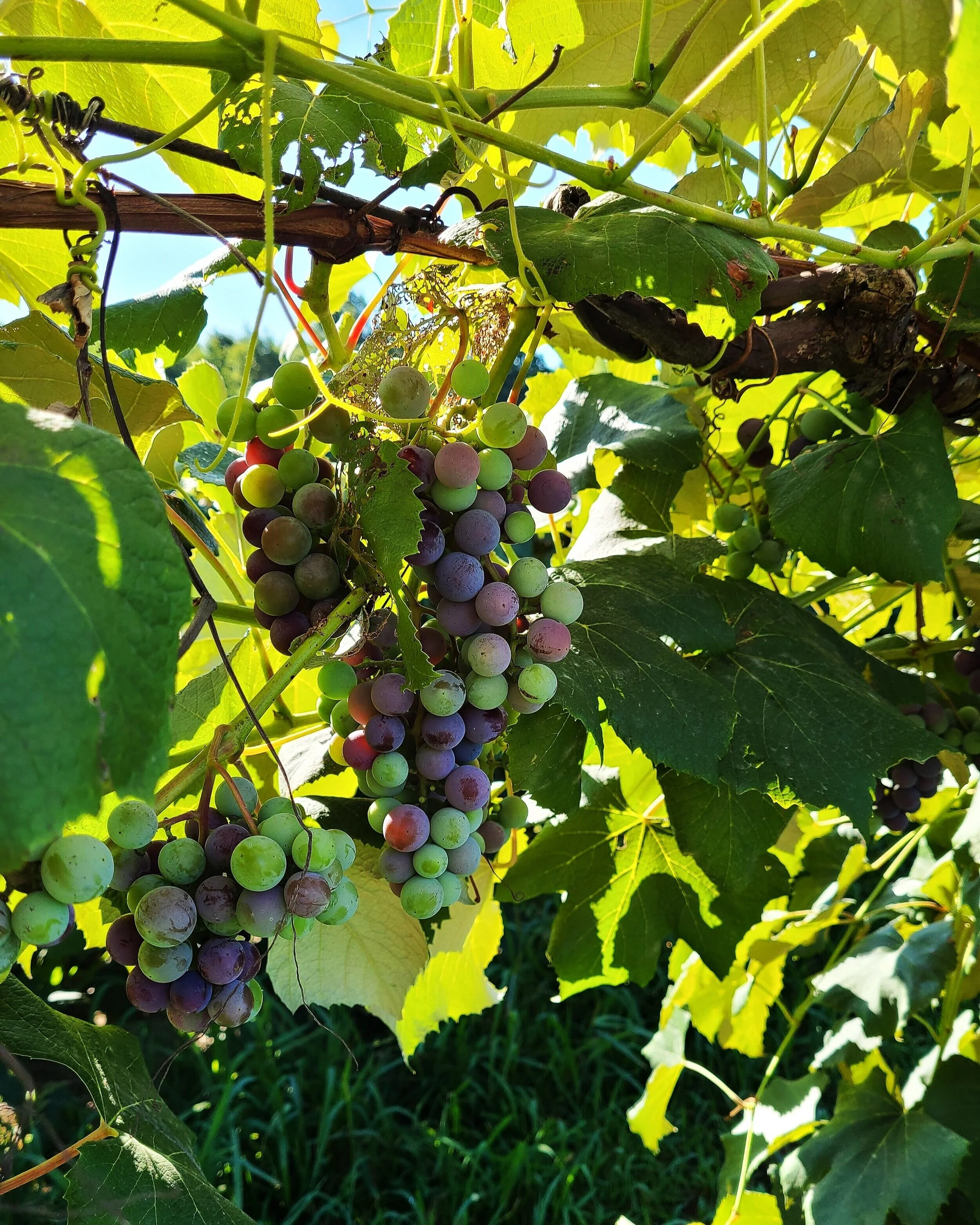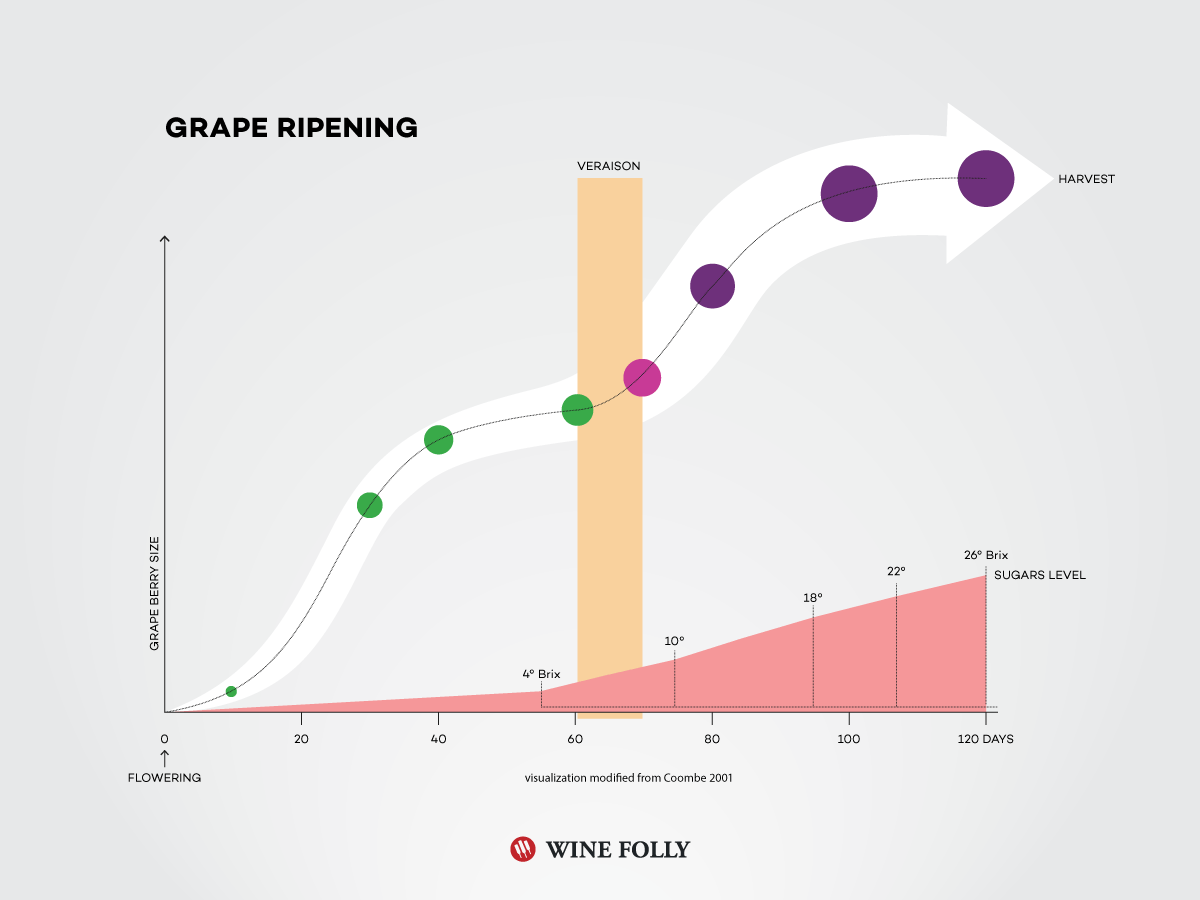Viticulture 101: Veraison Season
Sponsored Content
We’re all familiar with the period in fall when tree leaves turn from emerald color greens to vibrant hues of red. But have you ever heard of veraison? In viticulture (that’s the branch of horticulture that deals with wine growing) it’s the all important season when hard, unripe red wine grapes transition from pale green skins, to softer dark purples.
The year-long growth cycle of the vineyard runs from leaf buds in the spring through flowering, fruit set, harvest, leaf fall and winter dormancy. Tucked in between fruit set and harvest, veraison season sees fruit acidity decrease and sugar concentration rise. It’s a critical time, because when it comes to producing wine, how ripe the grape gets, how dark its skins are, and how much sugar accumulates within the grape, all play a major role in determining the flavor profile of the wine. The deposition of sugar into the berry depends on the level of leaf photosynthesis, the number of competing fruits on the vine, and weather conditions.
Wine growers are very vigilant during the veraison period. Its arrival signals the moment to change the way they care for their vines to achieve perfect ripening. Previous years’ growth and results are a guide to what to do at this point, with different regions and wine varieties requiring slightly different care to achieve perfect ripening and, eventually, perfect wine.
For example, in cooler climates like Western PA and New York, where Concord grapes are widely grown, winegrowers may choose to trim each vine to ensure the remaining fruit receives proper nutrients and sugars from the roots. Concords usually ripen later, as opposed to Pinot Noir grapes that ripen early and must be protected in the warmer months from birds once veraison hits and the grapes are sweeter.
Years with earlier veraison dates will have greater potential for exceptional vintage wines, which may have an economic impact on what wines vineyards bottle and sell. In part, the economic impact of veraison involves investment in various protections against pests and root infections, increased labor costs due to extra work involved in higher level of vine care, and loss of produce due to grape damage and predation.
Winemakers breathe a sigh of relief when veraison season is not much later than average, since those later years become challenging to maintain high quality winemaking standards.
Though, this year seems to have been particularly kind to Pennsylvania grapes. Randy Graham, president and wine maker at Courtyard Winery in Northeast Pennsylvania, says that the 2020 growing season has all the right attributes to make excellent wines, providing moderate rain fall, healthy doses of dry weather, and ample sunlight. Prior years have not always been so kind; too much rain, inconsistent veraison, and smoldering summers have spelled trouble for grape growth. But this year is different in the best of ways.
“This year makes any winemaker smile with the anticipation of a good harvest of top quality grapes! When it is dry we also have more hours of sunlight which aids in berry development and increases overall flavor intensity,” says Randy. “2020 is shaping up to be average in terms of crop size, which is also good as a large crop would likely result in a later than average Veraison date.”
The Lake Erie Regional Grape Program (LERGP) has recorded this year’s veraison on August 21, right on the 6 year average date.
With over 30,000 acres of vineyards along Lake Erie, Western Pennsylvania and New York has experienced warmer, drier weather patterns recently, making the already fertile wine country even more hospitable for robust, wine-making vineyards. Take a day trip to Courtyard Winery and the beautiful vineyards in the Lake Erie region to see for yourself.
Visit courtyardwinery.com for more information on visits and wine tastings.
This sponsored content is brought to you in partnership with Courtyard Winery.
Don’t miss a single delicious thing!


